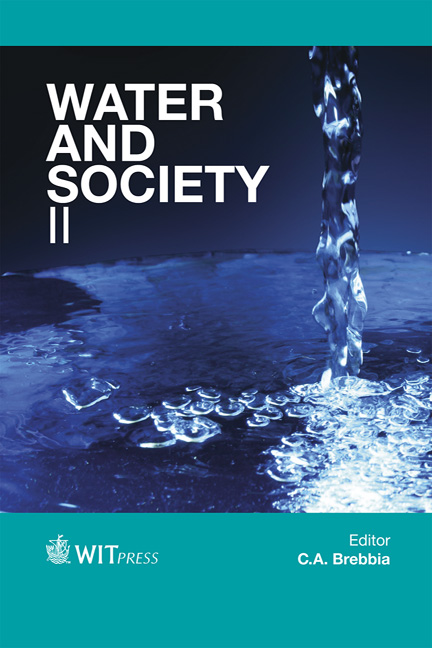Optimal Operation Of Water Pumping Stations
Price
Free (open access)
Transaction
Volume
178
Pages
14
Page Range
185 - 198
Published
2013
Size
656 kb
Paper DOI
10.2495/WS130161
Copyright
WIT Press
Author(s)
D. Al-Ani & S. Habibi
Abstract
In water distribution applications, energy cost is one of the most important cost components in which large amounts of electricity are required to pump, transport, and supply water to both domestic and businesses districts. These applications are heavily dependent upon energy costs. Although, there are many optimization methodologies that can theoretically maximize energy cost savings, but there are none (yet) that have practically succeeded. Therefore, the goal of the new optimization strategies should not be only to solve the energyoptimization problems, but also to have constraints criteria that seek for the design and management of the water distribution systems. Some of these strategies can be used: (a) to improve the operation of pumping stations for a given water demand; (b) to include a regulating reservoir between the water supply source and the delivery system; and (c) to control water level in tanks and reservoir to prevent overflow and draining. Such initiatives are likely to be more successful if they involve a role of maintaining the safety and the reliability of the pumping station while optimizing its operation. A novel strategy that can result in minimum operation costs and can lead to less energy consumption and then utility bills is proposed in this paper. In this strategy, a new heuristic algorithm, referred to as the Adaptive Parallel Multi-objective Differential Evolution (AP-MODE), is developed and used for: (a) selecting the lowest cost or optimum pump combinations (i.e., optimal pump scheduling) in water distribution systems; (b) evaluating the total energy costs required to operate the network; and (c) determining the reservoir storage capacity (i.e., optimal reservoir operation) to store water that is pumped during peak-off hours to be used during peak periods. This strategy is applied to the water distribution system of one rural district located in Saskatoon City, Saskatchewan, Canada.
Keywords
pumping stations, water distribution systems, energy-efficiency, heuristic algorithms





